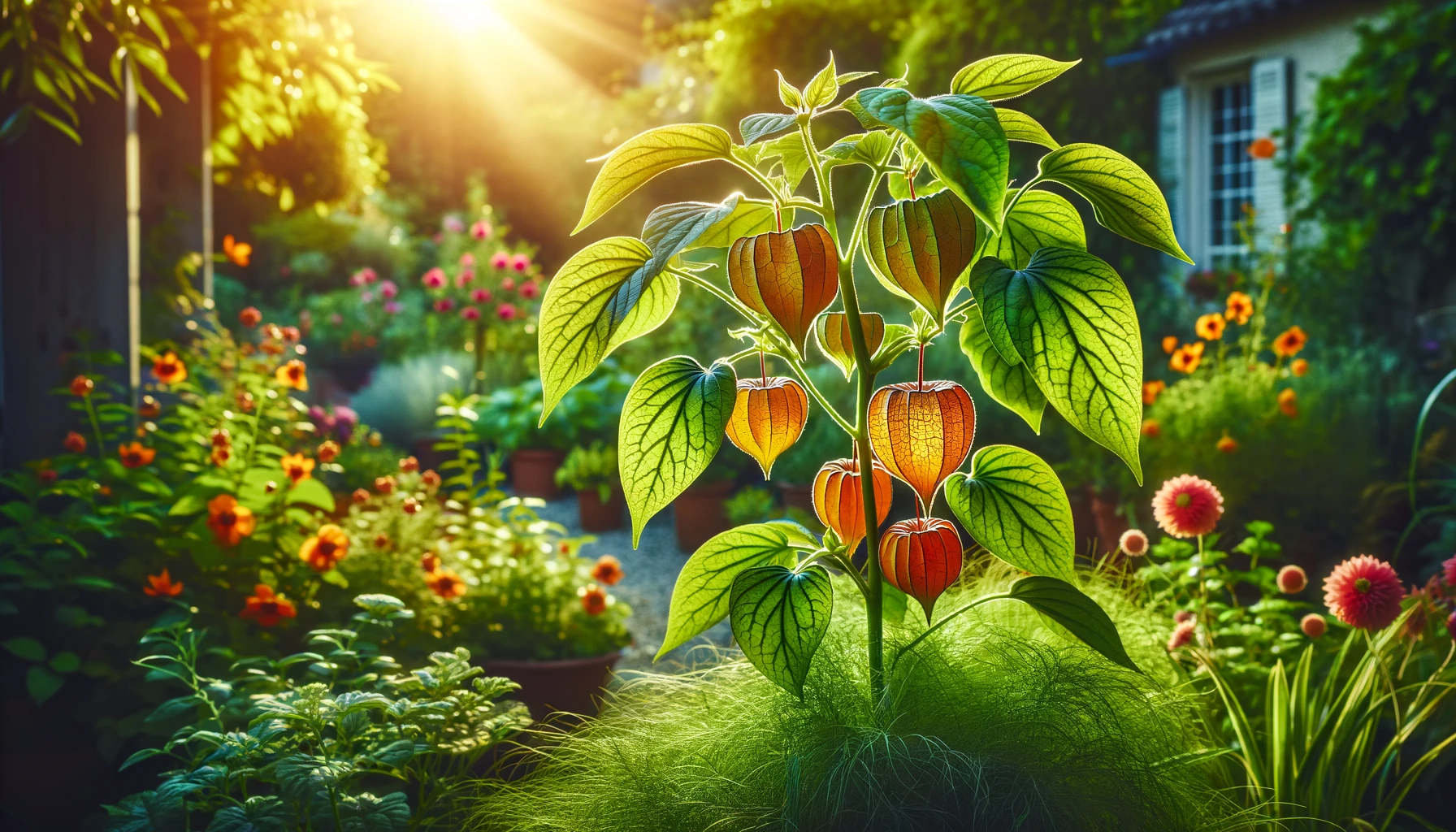
The Chinese Lantern, formally known as Physalis alkekengi, is a captivating plant known for its bright, lantern-like pods that resemble miniature Chinese lanterns. This perennial can grow up to 2 feet tall and 3 feet wide, making it an eye-catching addition to any garden.
History and Ideal Growing Conditions
Native to regions of Europe and Asia, the Chinese Lantern has a long history of cultivation due to its unique appearance and versatility in garden design. It has been grown for centuries for both ornamental and medicinal purposes.
Ideal growing conditions for Chinese Lanterns include full sun to partial shade and well-draining soil. This hardy plant thrives in a variety of soils but prefers a slightly acidic to neutral pH. It is quite resilient and can tolerate a range of temperatures, though it flourishes in temperate climates.
Pet Safety and Toxicity
While the Chinese Lantern is a beautiful addition to any garden, it is important to be aware of its toxicity. The plant contains solanine, which can be toxic if ingested by pets and humans. Symptoms of poisoning include nausea, vomiting, and diarrhea. It is best to keep this plant out of reach of curious pets and children.
Best Practices for Caring for Chinese Lantern
Caring for a Chinese Lantern involves understanding its specific needs and preferences. Here’s a comprehensive guide to ensure your plant remains healthy and vibrant.
Watering and Humidity
Chinese Lanterns prefer consistent moisture but do not like to sit in water. Water the plant regularly, allowing the top inch of soil to dry out between waterings. Overwatering can lead to root rot, so it’s important to maintain a balance. These plants are relatively tolerant of humidity levels but thrive best in moderate humidity.
Soil, Light, and Temperature
For soil, Chinese Lanterns thrive in a well-draining mix. A combination of garden soil, compost, and sand works well to ensure proper drainage and nutrient availability.
Light is crucial for the growth and blooming of Chinese Lanterns. They thrive in full sun to partial shade, with at least six hours of direct sunlight daily. Too much shade can result in fewer pods and leggy growth.
Temperature-wise, Chinese Lanterns prefer temperate conditions. They can tolerate a range of temperatures but do best in environments where they are protected from extreme cold or heat. In regions with harsh winters, consider mulching around the base of the plant to protect the roots.
Common Problems and Remedies
Despite being relatively hardy, Chinese Lanterns can face a few common problems. Yellowing leaves often indicate overwatering or poor drainage, while wilting can suggest underwatering. Ensure you maintain a consistent watering schedule and provide well-draining soil.
Pests like aphids and spider mites can occasionally be a problem. Regularly inspect your plant and treat any infestations promptly with insecticidal soap or neem oil to keep pests at bay.
Propagation and Benefits
Propagating Chinese Lanterns is relatively straightforward and can be done through seeds or division. Seeds can be sown directly in the garden in the spring, while division can be done in the fall or spring by separating the plant’s rhizomes and replanting them.
Besides their unique appearance, Chinese Lanterns are excellent for adding a touch of color and texture to your garden. Their vibrant pods are often used in floral arrangements and crafts, providing a long-lasting and decorative element.
Final Thoughts
Chinese Lanterns are a delightful addition to any garden, providing a splash of color with their unique, lantern-like pods. While they require a bit of attention to maintain consistent moisture and proper light conditions, the rewards are well worth it. By understanding their specific needs and providing the right conditions, you can enjoy the beauty and benefits of Chinese Lanterns in your home or garden. Happy gardening!



